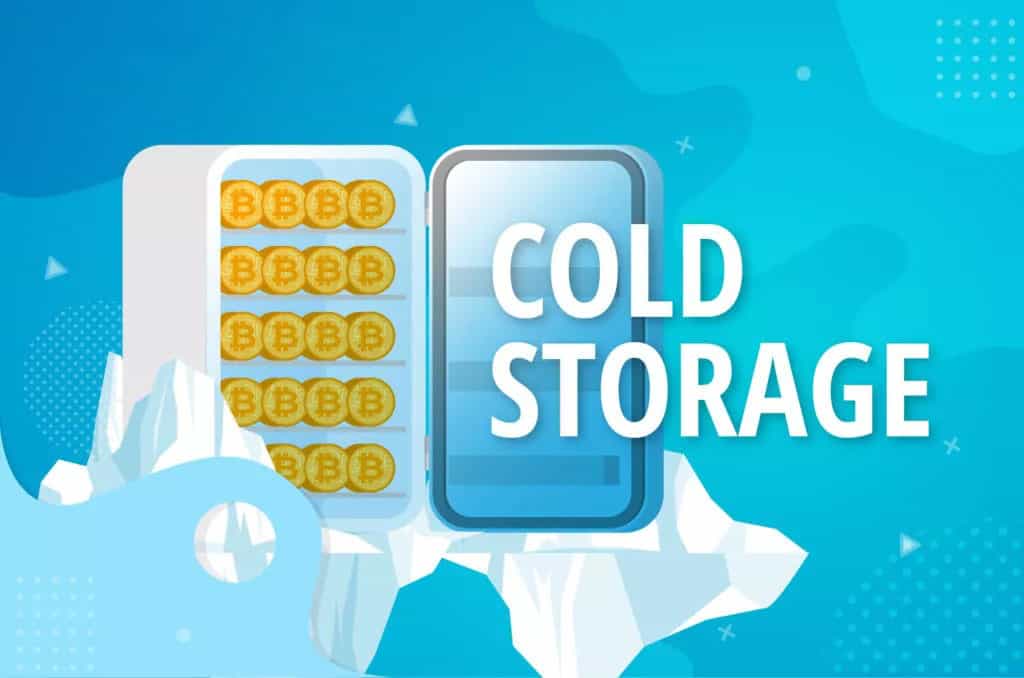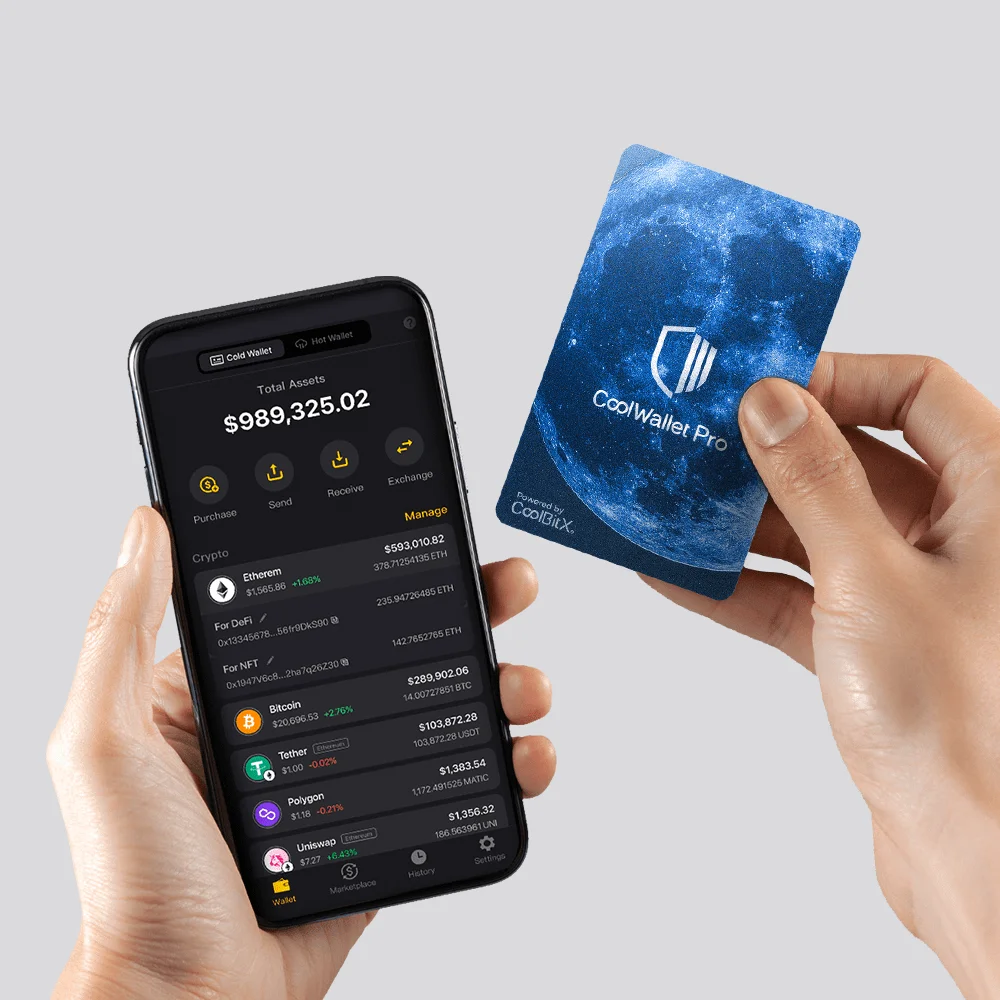Welcome to the Crypto Wallet Smackdown: your ringside seat for understanding the advantages and disadvantages of different crypto wallet types (hot vs. cold wallets). I live and breathe crypto, and I’ve seen firsthand how the right wallet can be a game-changer. Opting for hot wallets means you’re up for speed and convenience, but with cold wallets, it’s like building a vault for your digital gold. Let’s dive into what makes each wallet tick, and unravel which one might just be your crypto soulmate. Trust me, navigating the ins and outs of these wallets will arm you with the knowledge to steer your digital treasure with confidence. Ready for the face-off? Let’s get started on a journey that will leave you with a clear winner for your digital assets.
Understanding the Cryptocurrency Wallet Landscape
Hot Wallets – An Overview
Think of hot wallets like your everyday wallet. You carry it because you need quick cash or cards at hand. In the crypto world, hot wallets are all about easy access. You get your coins out fast to trade or spend. They live online and are run by software. This can be on your phone, computer, or even web-based.

Now, using hot wallets is kind of like walking around with your wallet open. Everyone can see you’ve got cash. With hot wallets, hackers are like pickpockets wanting your digital dollars. They’re always a risk. They can attack through many ways. Watch out for scams or weak spots in your wallet’s security.
But hey, don’t fret. There’s a friendly side too. Hot wallets are super handy for everyday use. They make trading and spending crypto swift and smooth. Plus, they are mostly free, and setting them up is a piece of cake.
Cold Wallets – What You Need to Know
Now let’s switch gears to cold wallets. Picture a safe buried in your backyard. It’s a chore to dig it out, but your valuables are super secure, right? Cold wallets work like that. They are offline and come in forms like hardware devices or even a paper with all your crypto info printed on it.
Cold storage options are like your personal vaults. But these vaults are not just any old metal boxes. They’re more like techy treasure chests, packing layers of security. They don’t show off your wealth to the online world. No internet means no hacker can poke around.

However, don’t expect to pull out coins in a jiffy from cold storage. It takes time and sometimes a bit of a knack. It’s all about the long game, keeping your crypto locked away tight until you really need it.
Some say, “Why not both?” So, there’s such a thing as multisig wallets. They need more than one key to open. Sort of like needing both a key and a combination for a bank vault. It means extra security.
Are you thinking cold wallets sound tough to use? In some ways, yes. But remember, they are like armor for your crypto. Unlike hot wallets, cold ones keep things on lockdown. You wouldn’t leave gold bars on your porch, right? Treat big crypto savings the same. Keep them cold, keep them safe.
In sum, your choice of wallet should match how you use your crypto. If you need speed and don’t mind a little risk, hot wallets are your go-to. But if your crypto stash is your treasure, go cold. It’s up to you to balance ease with safety.
Weighing Convenience vs. Security in Digital Asset Storage
The Accessibility of Hot Wallets
Hot wallets are like your everyday wallet. Easy to access, they hold your digital cash for quick payments. Think of online wallets for cryptocurrency, like mobile apps or websites. They’re super handy, but if you’re not careful, they can be risky. Imagine your wallet with a see-through pocket. Some info might slip out, right?
Understanding hot wallets is simple. They connect to the internet, which is a bit of a double-edged sword. On one side, hot wallet convenience is awesome. You tap your phone, and whoosh, you pay for stuff or trade coins fast. But on the other side, there are the risks of using hot wallets. Since they’re online, hackers might try to get in.
Software wallet risks come with the territory. The web can be a jungle, with mobile wallet vulnerabilities and hacking threats to crypto wallets. Those threats make you think twice about where you keep your crypto coins, right?
Hot storage accessibility means you can trade crypto anytime, which is great. But, ease of crypto transactions can paint a big red target on your virtual cash. So, let’s say you’re comparing wallet types for crypto and eyeing hot wallets. Ask yourself, how much risk am I cool with for that hot wallet ease of use?
The Fortification Through Cold Wallets
Now, let’s turn the page to cold wallets. These are the safes of crypto storage. They keep your coins off the net, so far from hacker reach. We’re talking about USB crypto wallets, hardware gadgets, and even paper. Yeah, you heard that – paper wallet for cryptocurrency. It’s like a secret note with all your coin info.
Cold wallet security advantages? Plenty! Cold storage options like cryptocurrency hardware wallet benefits include no online bugs, no sneaky cyber-thieves lurking. You own a thing you can touch, and it holds your digital treasure.
But here’s the thing about storing crypto offline – it’s not as quick to use. You can’t just click and pay for a coffee or a game online. It’s like having a vault. You don’t open it for just anything. So, the cold wallet vs hot wallet debate kinda boils down to this: do you want a vault or a wallet you carry around?

Sure, cold wallet retrieval can take effort. But think about the peace of mind. With cold wallet investment safety, your coins are tucked away. Like grandma’s old savings under her mattress, but way cooler, of course. You can sleep sound knowing your crypto cold storage solutions are like a bank vault.
Comparing wallet types for crypto isn’t a one-size-fits-all deal. Hot wallets offer a quick swipe for that morning latte. Cold wallets? They’re your crypto knight armor. They’re there for the long haul, keeping your coins safe. Different needs, different wallets.
In the clash of hot versus cold, you’ve got to weigh what matters most. Fast and easy, or locked and secure? Keep your coin’s needs in mind, and you’ll find the right fit. Whether you’re all about that hot wallet convenience or you lean toward the fortification of cold wallets, just remember: your digital assets are precious. Make sure they’re stored right.
Scrutinizing the Risks and Rewards of Wallet Types
Perils of Hot Wallets and How to Mitigate Them
Imagine you’re walking around with a wallet full of cash. It’s handy, right? You can buy anything you want, quickly. Now, think of a hot wallet like that. It’s a spot for your digital cash – cryptocurrencies. People love hot wallets for their easy access. You tap a few buttons, and boom, you’re good to go with the transaction. But, wait a minute. They’re online. This means they face risks like hacking. Scary, isn’t it?
So, how do you keep your crypto safe in a hot wallet? First things first, use strong passwords. I mean, really strong. Don’t just rely on your pet’s name. Please, mix it up with numbers, symbols, the works. Next, activate two-factor authentication (2FA). This puts up another door for hackers to get through. Also, use wallets from trusted sources. Make sure they have good reviews and solid security features.
But here’s something you should know. Even the best online wallets can face attacks. So, what do you do? Keep only a bit of crypto in your hot wallet. Like the cash in your pocket – not too much that it hurts if lost. Move the rest to cold storage.
The Impenetrable Nature of Cold Storage Solutions
Now, let’s switch gears to the safe in your house, where you keep valuables secure. That’s like a cold wallet for your digital assets. It’s offline, making it tough for thieves to get their hands on. So, what’s the deal with cold storage? It’s the go-to for keeping your crypto safe for a long time. Why? Because it’s detached from the internet. No web connection, fewer hacking chances.
Cold storage comes in a few types, like hardware and paper wallets. They stand out for their strong security. A hardware wallet is like a USB stick, but smarter. It stores your private keys, which act as your crypto’s secret handshake. Lose that, and say bye-bye to your coins. Using hardware wallets is pretty simple, and they’re hard to crack open.

Paper wallets are also super secure. They’re literal pieces of paper with your crypto keys printed on them. Simple, yet effective! Just make sure not to spill coffee on them or lose them. That would be a real bummer.
And get this, some cold wallets let you set up multi-signature features. It means needing more than one key to get into the wallet. This is like having a treasure chest that needs three different keys, from three trusted pals, to open it. Pretty cool for security!
Now, while cold wallets are the Fort Knox for crypto, they’re not perfect for quick buys. If you’re about hot trades and fast payments, they might slow you down. But, if your game is keeping your investments safe, cold wallets are your best friend. Just remember, whether you’re hot or cold, keeping your digital coins secure is the name of the game. Stay sharp and choose smart.
Navigating the Technical Terrain of Crypto Wallets
Enhancements in Hot Wallet Technologies
Understanding hot wallets means diving into how we manage our digital coins with ease. Hot wallets connect to the internet. This keeps your digital cash within quick reach. But with this ease, you must know the risks of using hot wallets. They can be targets for cyber-thieves.
Hot wallet convenience is a big draw. You can quickly move your cryptocurrency or check your balance. A mobile or web-based crypto wallet is super handy. They make buying and selling fast for busy folks. Always protect your hot wallets, though. Use strong passwords and two-factor authentication.
Software wallet risks shouldn’t stop you from using hot wallets. But it’s good to know about them. Being online means hackers could probe them for weaknesses. If someone gets your mobile wallet’s details, your coins might vanish into thin air. So, safe practices are key. Learn about wallet encryption methods. They often help stop unwanted access.
If you like a faster way to deal with your crypto, hot storage accessibility is a win. Top up your e-wallet just like grabbing cash from an ATM, quick and easy. Keep your spending money here, not your life savings. Like carrying a wallet, don’t hold more than you can afford to lose.
The Evolution and Advantages of Hardware and Paper Wallets
Now, storing crypto offline is another story. Cold wallets keep your virtual money disconnected from the web. This makes them less reachable to hackers. Think of a cold wallet like a safe, tucked away until you really need it.
For coins you don’t plan to spend soon, cold storage options are tops. Hardware wallets are like tiny vaults. They plug into your computer, but only when you have to move crypto around. These USB crypto wallets store your money’s “keys” offline. This keeps them away from hacking threats to crypto wallets.
The benefits of hardware wallets extend beyond security. They also last. Since they’re only online briefly, they’re not open to constant attack. Many now come with cool features, too. Some have screens, or let multiple people sign off on a big transfer – that’s multi-signature wallet features for you.

Paper wallet for cryptocurrency is the old-school cool of crypto. You print your keys on a piece of paper and keep it safe. It’s a basic but strong way to lock away your crypto cash. No fancy tech needed, just a secure spot like a bank vault or a hidden safe.
Comparing wallet types for crypto leaves us with choices. Hot wallets are your day-to-day pals. Cold wallets are your secure savings account. With hot wallets, think speed and ease of use. With cold wallets, prioritize investment safety and peace of mind.
Hot wallet vs cold wallet? It’s all about how you want to handle your digital dough. Use hot wallets for ease, cold for security, and always stay sharp on safeguarding your crypto treasures.
In this post, we’ve explored the world of crypto wallets. We started by diving into hot wallets, which are great for easy access but come with a risk. Then we looked at cold wallets, the steadfast vaults of the digital currency realm, offering strong security for your coins. We weighed the trade-offs between convenience and fortification when choosing how to store your digital assets.
Hot wallets make daily transactions smooth, while cold wallets keep your savings safe from online threats. Understanding these risks is key; a hot wallet needs careful monitoring whereas cold storage provides peace of mind. As technology advances, hot wallets get smarter and cold wallets become more user-friendly.
It’s clear that managing cryptocurrency requires a balance. You need to choose between easy access and tight security based on what’s at stake and how you use your coins. With this knowledge, you can confidently navigate the world of crypto wallets, making informed decisions to protect and grow your digital wealth. Always remember, in the realm of cryptocurrency, knowledge is your best defense and smart choices your strongest ally.
Q&A :
What are the main differences between hot and cold crypto wallets?
Hot wallets are digital wallets that are connected to the internet, allowing for quick and easy access to cryptocurrencies for transactions and trading. They include software wallets like desktop, mobile, and online wallets. Cold wallets, on the other hand, are offline storage solutions like hardware wallets or paper wallets. They provide an additional layer of security by being disconnected from the internet, thus less vulnerable to online hacking attempts.
How do hot wallets and cold wallets compare in terms of security?
When it comes to security, cold wallets are generally considered to be more secure than hot wallets. As cold wallets are not connected to the internet, they are immune to online hacking attacks and vulnerabilities. Hot wallets, although more convenient for regular use, are more susceptible to security risks such as hacking, phishing, and malware because they maintain an internet connection.
What are the advantages of using a hot crypto wallet?
The primary advantage of a hot crypto wallet is convenience. Users can easily access and manage their funds for daily transactions, trading, and other online activities. They usually come with user-friendly interfaces and are often free to use. Hot wallets also facilitate quick transfers, which is essential for those actively trading or using cryptocurrencies for regular payments.
Are cold wallets the best option for all crypto users?
Not necessarily. While cold wallets offer increased security and are often recommended for the long-term storage of large amounts of cryptocurrencies, they are not always the best option for everyone. Users who need quick and frequent access to their assets for trading or payments might find cold wallets inconvenient. Also, cold wallets can be more expensive and may require a higher level of technical knowledge to properly set them up and use them.
Can both hot and cold crypto wallets be used simultaneously?
Yes, it is quite common for cryptocurrency users to use both hot and cold wallets in tandem. This approach allows users to benefit from the convenience of a hot wallet for everyday transactions, while storing the bulk of their assets in a more secure cold wallet. By using both hot and cold wallets, users can balance security with accessibility.


